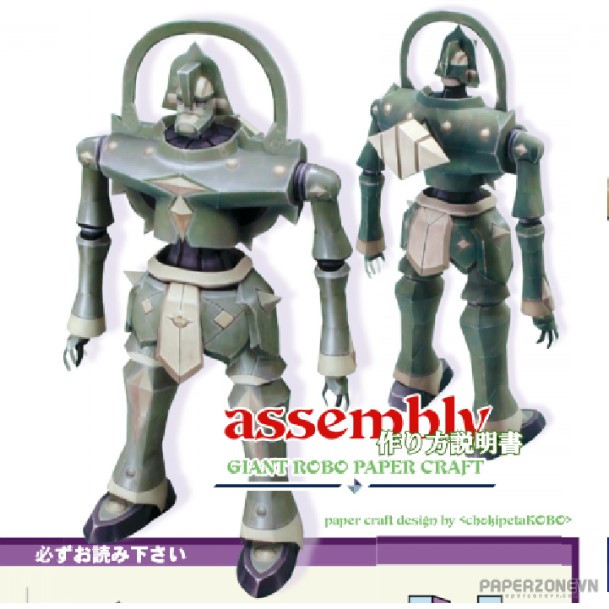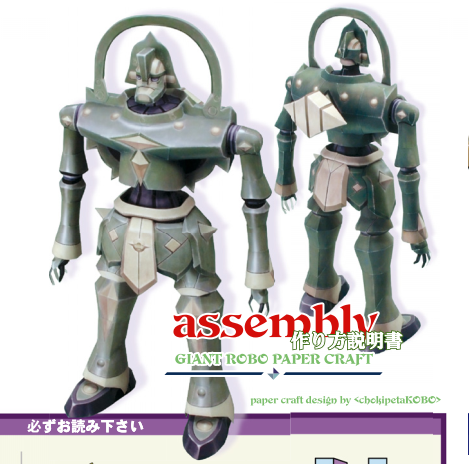- Thumbnail
-

- Resources
- Received from the internet.
- Author
- Chokipeta
- Printed File Format
- Page(s)
- 6
- Part(s)
- 54
- Instruction Format
[Robo Gigante] GR-6 papercraft
Although the series was violent by 1960s American standards for children's programming, in Japan it was no more violent than other tokusatsu TV series airing at the time. Gunfights are a staple of each episode and the show's two child leads (Johnny Sokko and Mari Hanson) were frequently seen shooting with the other Unicorn agents. In one episode, Johnny and Mari are captured and tied to trees by Gargoyle and are within seconds of being executed by a firing squad when they are rescued by Unicorn agents. Nearly every Japanese anime exported to the United States during that period was edited for violence, but in Johnny Sokko and His Flying Robot, only a minimum of violence was removed. In addition to dubbing American voice actors for the American version, many of the show's sound effects were remixed or re-recorded.
Instruction: PDF

Although the series was violent by 1960s American standards for children's programming, in Japan it was no more violent than other tokusatsu TV series airing at the time. Gunfights are a staple of each episode and the show's two child leads (Johnny Sokko and Mari Hanson) were frequently seen shooting with the other Unicorn agents. In one episode, Johnny and Mari are captured and tied to trees by Gargoyle and are within seconds of being executed by a firing squad when they are rescued by Unicorn agents. Nearly every Japanese anime exported to the United States during that period was edited for violence, but in Johnny Sokko and His Flying Robot, only a minimum of violence was removed. In addition to dubbing American voice actors for the American version, many of the show's sound effects were remixed or re-recorded.
Instruction: PDF

Sponsored: Google Advertising
